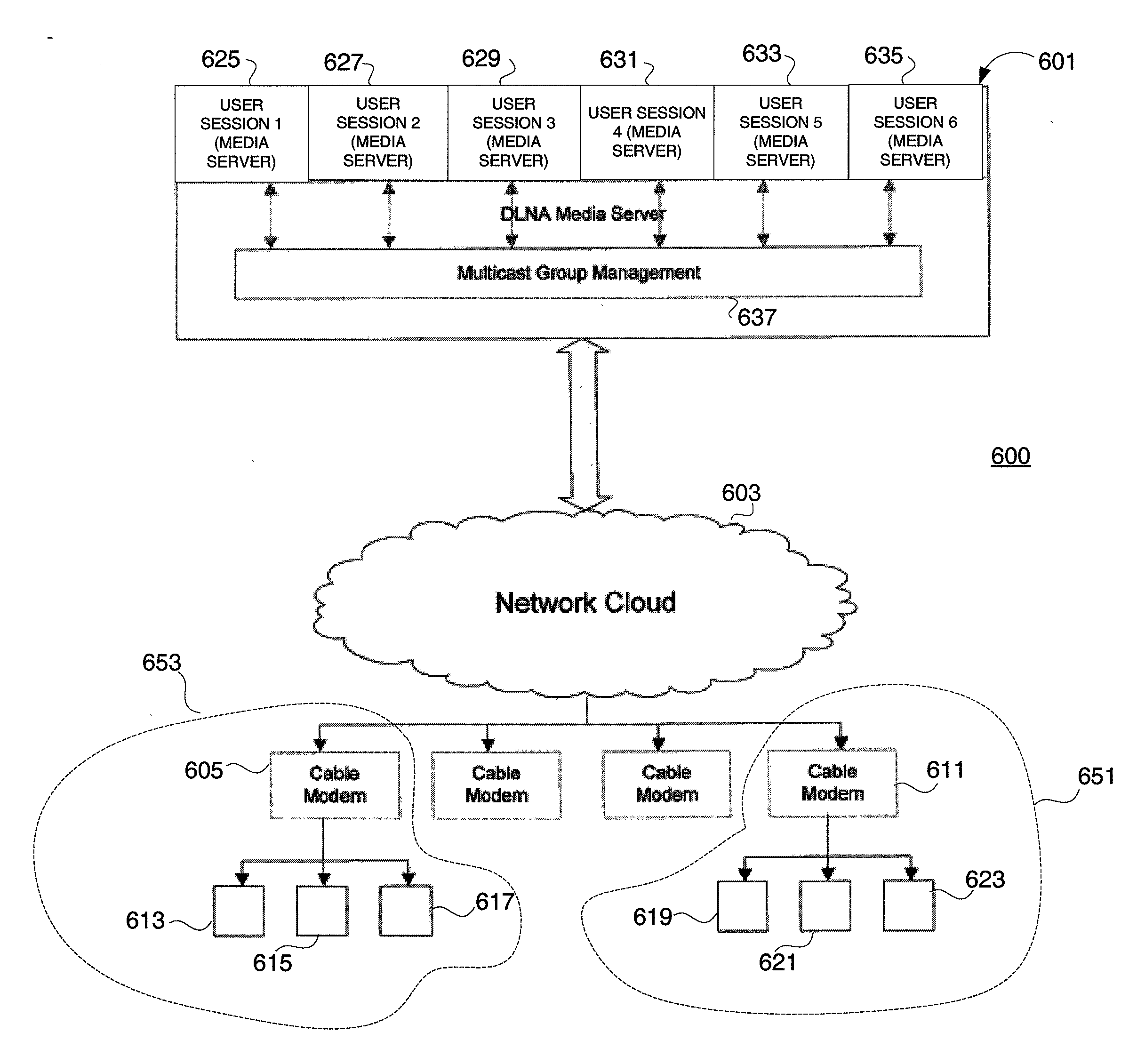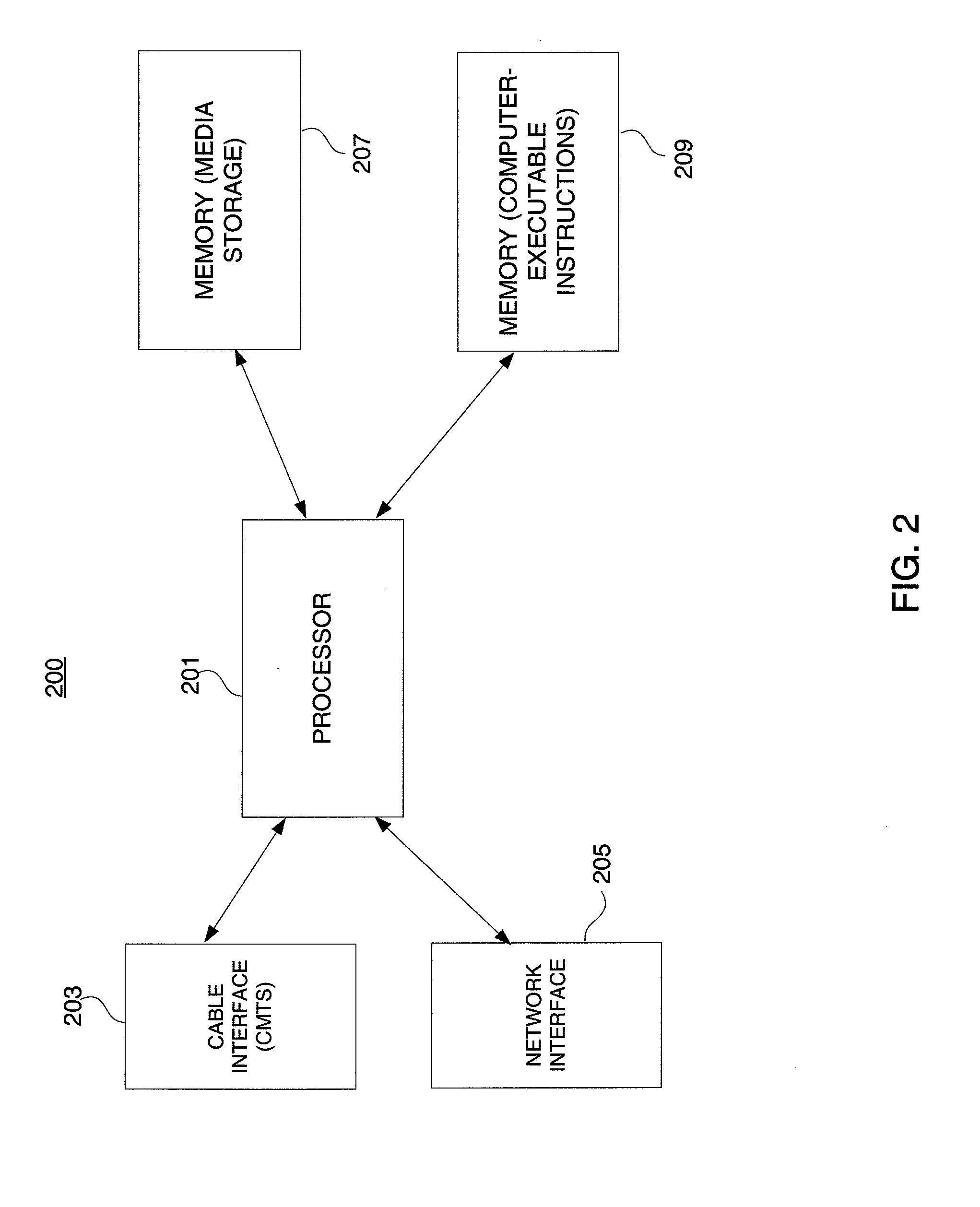Network-Based Digital Media Server
a network-based digital media server and network-based technology, applied in the field of storing and rendering media content, can solve the problems of increasing the cost to the customer, difficult and burdensome responsibility, and media content is often stored in the internet,
- Summary
- Abstract
- Description
- Claims
- Application Information
AI Technical Summary
Benefits of technology
Problems solved by technology
Method used
Image
Examples
Embodiment Construction
[0021]FIG. 1 shows a system 100 that supports a network such as a Digital Living Network Alliance (DLNA) network. DLNA published its first set of Interoperability Guidelines in June 2004 and the first set of DLNA Certified products began appearing in the market soon thereafter. DLNA Interoperability Guidelines, version 1.5, was published in March 2006, and then expanded in October 2006. These guidelines enlarge the capabilities of a DLNA-defined network to include more home and mobile devices. They also include the specifications for link protection to allow secure transmission of copyright-protected commercial digital content. Products are certified by passing the DNLA Certification Program. However, embodiments are not limited to version 1.5 of the DNLA Interoperability Guidelines.
[0022]DLNA media server 107 appears as a local media server in accordance with various aspects. While a DLNA media server is typically hosted at the customer (user) premises in accordance with traditiona...
PUM
 Login to View More
Login to View More Abstract
Description
Claims
Application Information
 Login to View More
Login to View More - R&D
- Intellectual Property
- Life Sciences
- Materials
- Tech Scout
- Unparalleled Data Quality
- Higher Quality Content
- 60% Fewer Hallucinations
Browse by: Latest US Patents, China's latest patents, Technical Efficacy Thesaurus, Application Domain, Technology Topic, Popular Technical Reports.
© 2025 PatSnap. All rights reserved.Legal|Privacy policy|Modern Slavery Act Transparency Statement|Sitemap|About US| Contact US: help@patsnap.com



